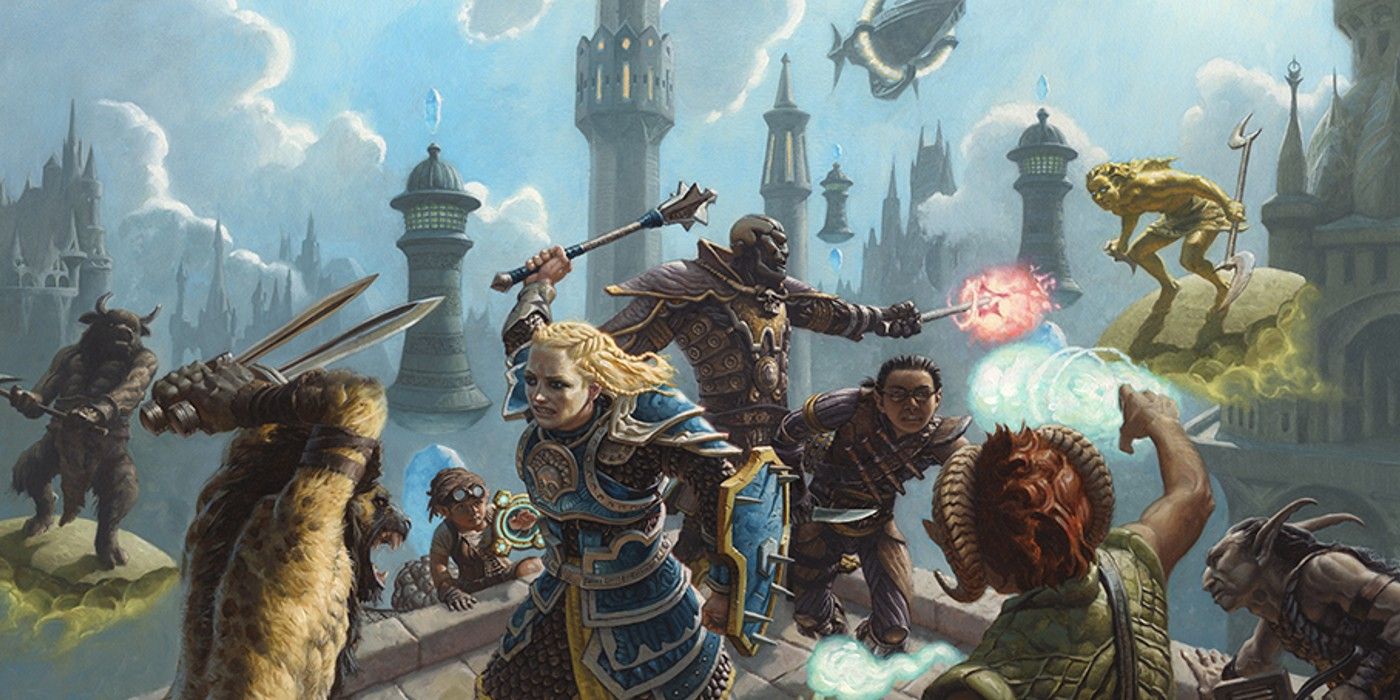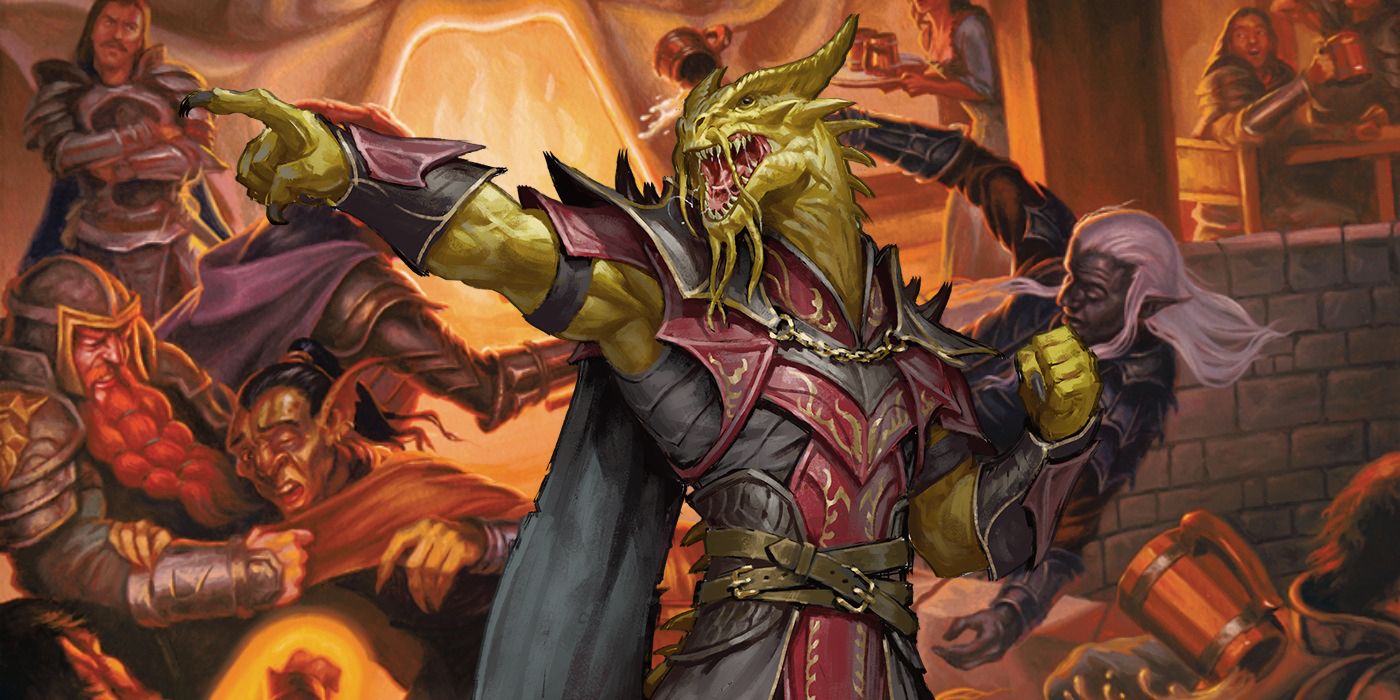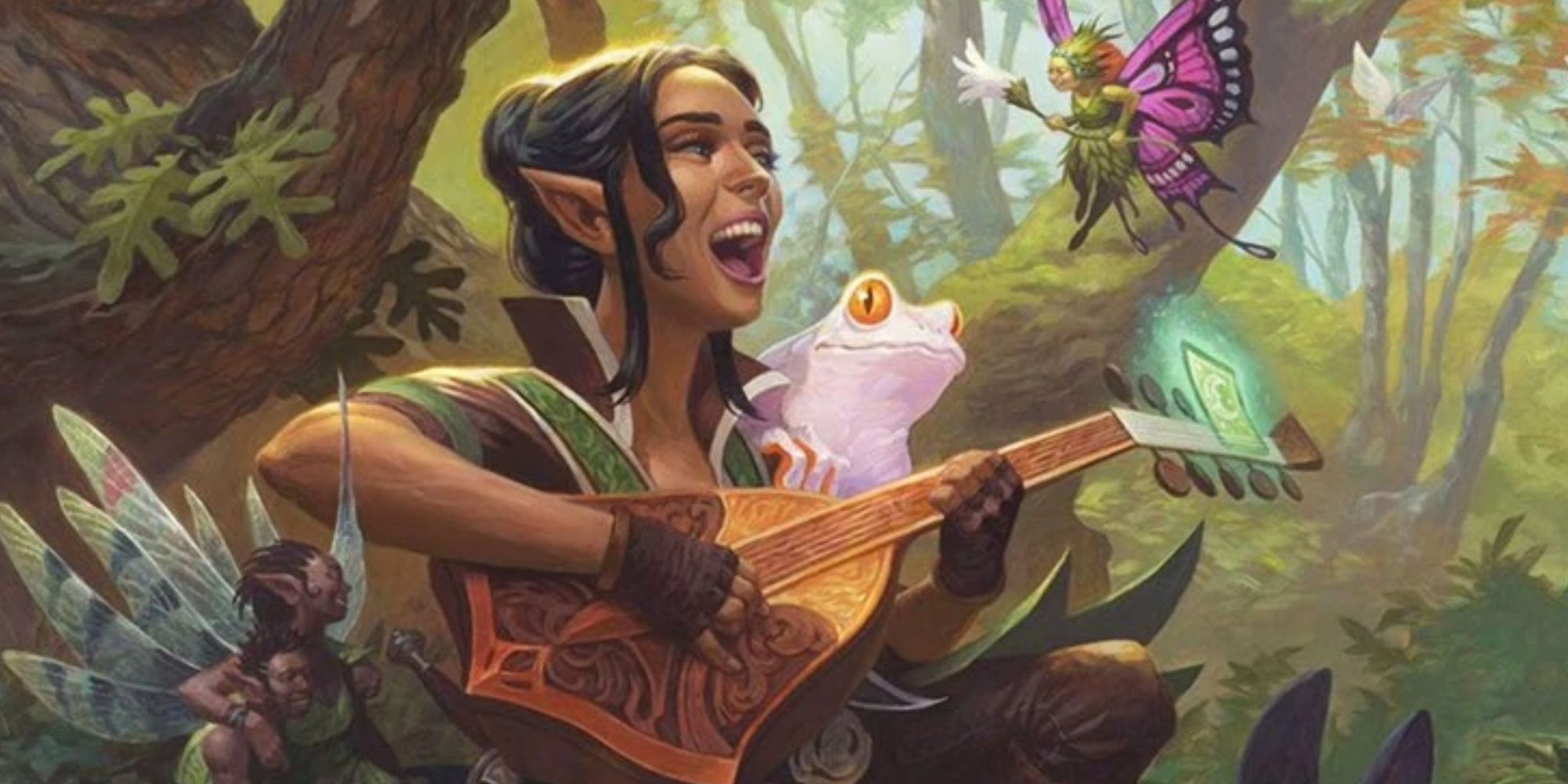One of the biggest strides the current 5e rules of Dungeons & Dragons took was incorporating backgrounds into the character creation process, and gaming groups can select diverse backgrounds to create interesting party dynamics. Where the very earliest versions of D&D allowed players to select a race or a class, as demi-human races like Dwarf and Elf were functionally their own classes, subsequent editions involved selecting both a class and race. Most groups encouraged character backstory, but prior to 5e there were no rules specifically supporting a background identity beyond the race and class selected at level one. The backgrounds of 5e D&D offer aid in characterization, so player characters can be more than archetypes of their chosen class. They also provide useful skill proficiencies, along with languages or tools. Players can select from Dungeons & Dragons’ most useful character backgrounds, while ensuring the party members come from different walks of life, creating interesting roleplay and interparty dynamics.
The separation of character concepts from their class role makes 5e D&D characters inherently interesting, particularly for those whose background selection runs against the grain for their class. A Fighter with the Soldier background is close to a stereotype of the class. A less conventional choice like a Bard Soldier produces a concept close to a skald, an inspiring battlefield leader who chronicles the troupe’s triumphs and has a varied skill set. By placing that layer of separation between background and class, a player character becomes more unique. A Wizard with the Sage background is a token character of the fantasy genre. A Barbarian Sage could instead embody an obsessive researcher whose frustration with the limitations of their knowledge manifests as superhuman rage. It is unfortunately common for players to select D&D backgrounds best suited to their class, which grant skill proficiencies tied to their highest stats. Bucking that trend leads to more interesting characters, and more unique parties.
Veterans of older editions often think of party composition in terms of filling specific roles. These are usually combat-oriented roles, and 4e D&D provided defined roles like Defender, Leader, and Striker, with a variety of classes to fill each niche. More experienced groups also think in terms of personality types, to allow each character to stand out in roleplaying, not just in battle. The most basic level separates unscrupulous archetypes, like the Rogue class, from rule-oriented classes like Paladin. Tying these personality archetypes to backgrounds instead of classes makes for more interesting roleplay among party members. A Rogue might carry the Acolyte background, depending on their faith for guidance and dedicating every stealthy kill to a higher power. A Paladin with a character background from D&D’s Wild Beyond the Witchlight could be Feylost, pairing well with the Oath of the Ancients subclass to portray a holy warrior of the mercurial fey powers of nature.
D&D Backgrounds Provide More Interesting Context To Character Decisions Than Classes
Beyond making individual characters more nuanced, varied Backgrounds can impact how player characters deal with situations as much as their class and skill list. A Cleric with the Failed Merchant background from Acquisitions Incorporated might see a village overrun by a plague as a business opportunity. If bandits are raiding a merchant company, a Druid with the Urchin background might recall their own days growing up poor and hungry, and express more sympathy for the desperate brigands than the wealthy merchants who have been targeted. Having a party that comes from different backgrounds allows for more personal outlooks and less homogenous approaches to dilemmas the party faces. Characters from backgrounds associated with duplicity, like Charlatan or Spy, might resort to trickery, where the new D&D background from the Dragonlance campaign Knight of Solomnia might find such approaches dishonorable.
By having these divergent character paradigms associated with background instead of class, the discussions become enriched thanks to character history. A character stating that the party should avoid breaking the law because they are a Paladin comes off as a stock character. Conversely, one with the Urban Bounty Hunter background can provide a different perspective, noting that they will be hunted relentlessly if they are caught in the act. Even simple decisions like when to take a long rest can become moments for quality roleplay if backgrounds, instead of classes, come into play. A Sorcerer stating the party should rest simply to refresh their spell slots might come across as close to meta-gaming. If the same character has the Soldier background and relates anecdotes where their comrades pushed themselves too far without adequate rest, leading to disaster, it gives the decision more gravitas.
Some source material, like the new D&D backgrounds from Strixhaven, add spells that might not otherwise be available to a character class. A Druid with the Lorehold Student background receives a series of useful investigation-oriented spells Druids do not normally have on their spell list. Such a character could take a surprisingly grim approach to investigations, as they might be more inclined to use spells like Speak with Dead instead of searching for living witnesses to a crime. Even the aesthetics of how characters engage in combat can vary wildly based on backgrounds. A Ranger with the Knight background might use the Hunter’s Mark spell alongside a formal challenge to a duel. A Monk with the Hermit background portrays a traditional ascetic lifestyle, where a Gladiator Monk might fight with more showmanship, making every battle a spectacle for any observers.
The Varied Backgrounds In D&D Can Lead To Mutual Understanding & Build Camaraderie
These Background-based portrayals could lead to party conflicts, as a pragmatic Mercenary background character might resent a Gambler’s risk-taking in battle. The powerful Spelljammer D&D campaign setting background Astral Drifter, who gained secret divine lore from a chance encounter with a deity, might frustrate an Archeologist or Acolyte who dedicated their life to discovering such knowledge through hard work. The privilege afforded to a Noble background character simply based on the circumstances of their birth could vex a self-reliant character like a Sailor or a Folk Hero. A character who is already reluctant to trust others, such as one with the Haunted One background, might be at ease around an archetypal Barbarian, who displays their emotions openly. A Barbarian with the Spy background, however, might portray a colder kind of rage, one that would be more off-putting to other party members than the typical screaming frenzy due to the difficulty in reading their moods.
The heroic adventure focus of D&D requires players to build characters who can excel at a variety of challenges. Some D&D parties struggle simply to avoid a TPK, where others function like efficient special ops units. The real victory condition of D&D is not simply to defeat the campaign’s enemies or solve its mysteries, but for each character, and the party as a whole, to engage in interesting role play in the process. Class and race can certainly help shape that role play but putting too much emphasis on those elements pushes games towards a pastiche of Lord of the Rings and other iconic fantasy works. Emphasizing the varied backgrounds of party members makes it clear that their personal history shapes who they are today more than their race or their skill set.
Ideally, the events of a campaign will allow for dynamic arcs where characters change. They might overcome traumas from their past, or recontextualize lessons from their backstory. If nothing else, a campaign where Dungeons & Dragons characters don't over-optimize, but emphasize their distinctly different backgrounds will be more interesting than one with characters defined solely by their personal combat abilities and skill proficiencies.



